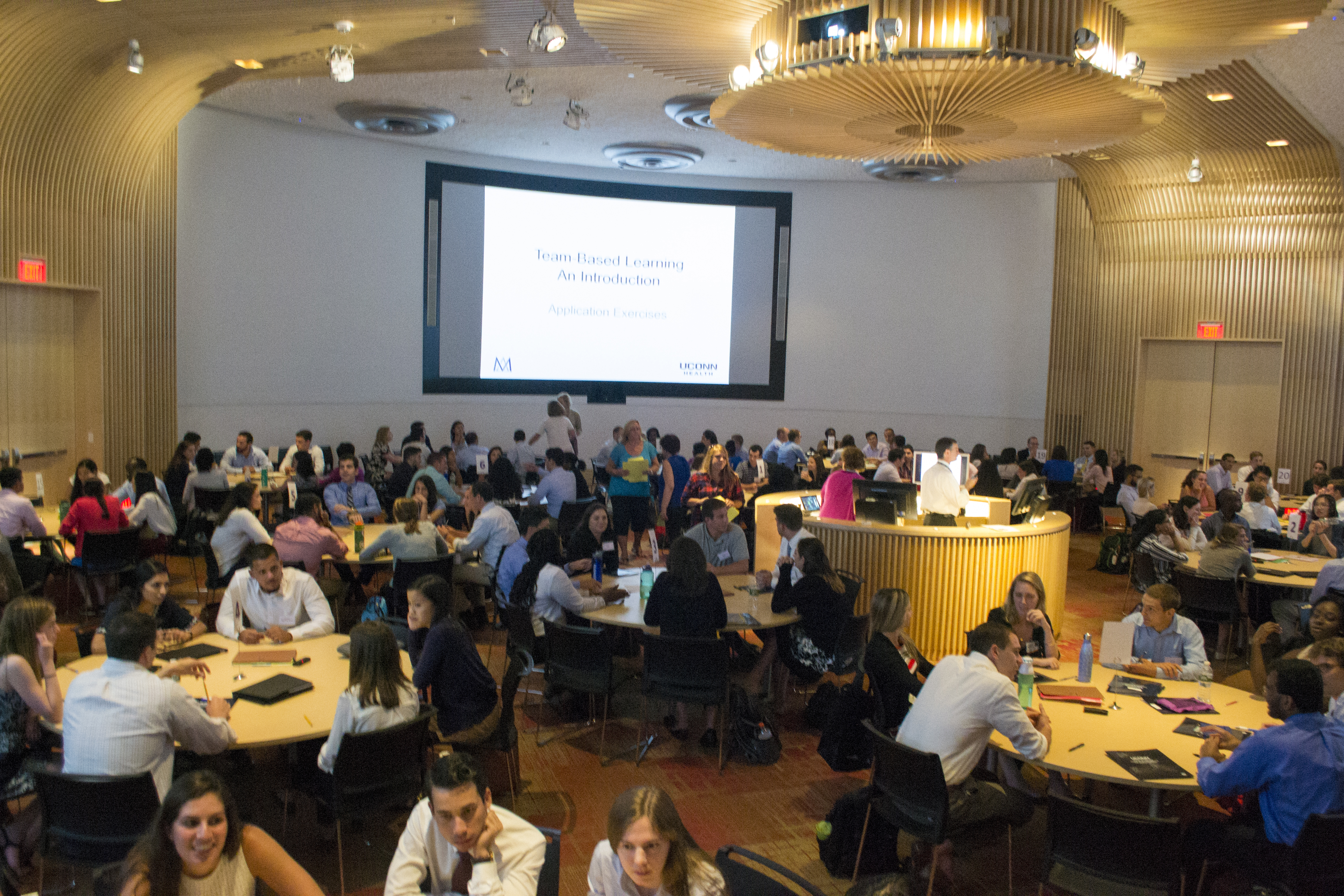The Class of 2020 at the UConn School of Medicine is unlike any other – and not just because it is the largest ever.
The one hundred medical and 49 dental students are the first to begin a new four-year curriculum designed to meet the challenges of the rapidly changing field of healthcare, and they are doing so in a facility that has also been transformed.
“The explosion of clinical information and technology, the development of complex healthcare systems, a move from inpatient to outpatient care settings, and team science are all changing medicine and healthcare,” says Dr. Bruce T. Liang, dean of UConn School of Medicine. “Our new curriculum is a platform to make our students the best possible future doctors and prepare them to be healthcare leaders.”
Called MDelta, “Making a Difference in Education, Learning, and Teaching Across the Curriculum,” the program has three stages: exploration, clinical immersion and transformation. The stages culminate in “entrustment,” when the students graduate with their medical degree and move on to their residency training in hospitals across the nation.
At the start of medical school this year, each student will be assigned to a primary care physician in an outpatient practice at UConn Health to gain clinical care experience and follow the health of patients over three years. They are also assigned to teams for a long-term hospital rotation in the City of Hartford, a healthcare system caring for a diverse population.
Throughout their education, students will have both inpatient and outpatient clinical immersion experiences across the care spectrum from internal medicine to surgery. These activities will prepare them for their sub-internship, critical care and emergency medicine rotations, and their transition to a residency “bootcamp” course.
“Early clinical and health system exposure is an integral part of the new curriculum along with inter-professional activities. A cutting-edge holistic assessment program provides time for students to evaluate their competencies as they reach milestones in their development,” says Dr. Suzanne Rose, senior associate dean for education at UConn School of Medicine.
New student Brook Schuman, 24, of West Hartford is pleased with the way the new curriculum builds on the programs strengths.
“UConn does the best job of getting you experience with patient care early,” says Schuman. “I think it’s really great the way medical education is trending. I like the idea of active learning and also the team approach.”
As part of their studies students will have access to the latest medical and educational resources and technologies in the traditional anatomy lab, the virtual anatomy lab, and medical imaging.
Students will rely daily on their in-depth REALM (Remote Active Learning Materials) to prepare for patient case studies and clinical skills training. They will also become skilled on the use of the electronic medical record (EMR), a tool they will employ each day in their future medical practices. EMR training is powered by the American Medical Association’s (AMA) prestigious selection of UConn to be a member of its Accelerating Change in Medical Education Consortium.
And, a novel course called VITALS (Vertically Integrated Teams Aligned in Learning and Scholarship) will bring together students to learn about healthcare policy, population health, ethics, and current events that affect local and global communities.
In addition to the new curriculum, the physical space at the UConn School of Medicine has been renovated. The Academic Entrance and Rotunda include a 17,000 sq. ft. state-of-the art team-based learning center funded by an investment of Bioscience Connecticut.
“It’s really cool for our class to be able to use all these resources, the new Rotunda and the virtual anatomy lab with all its interactive learning with medical imaging,” says Christine Parsons, 23, of Avon.
Plus, adds new dental student Akosua Adzenyah, 21 of Glastonbury, UConn “has small class sizes with a better opportunity to know the faculty and for them to know you.”
More than 3,316 students have graduated from the UConn School of Medicine since 1972.



